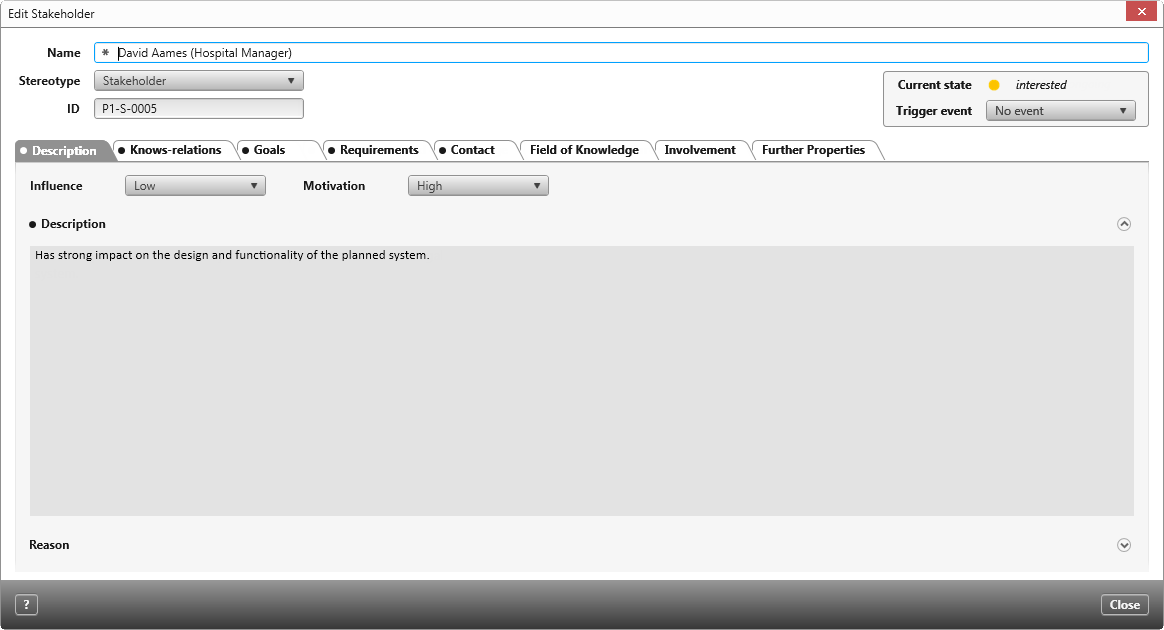Stakeholder
A stakeholder is a person or a representative of an organization or user group who has an interest in the future system and thus in achieving its goals.
If you do not have a contact persons with whom you can discuss and determine expectations for the system, you can use personas.
Creating stakeholders via a package
- Open the Products window by clicking the eye and the Show Products command.
- First, create a new package that will contain the stakeholders and then choose the context menu command Create/ Stakeholder.
- You can enter all necessary information in the stakeholder dialog window. Give the stakeholder a name and fill the other tabs with relevant information.
- Click OK. The dialog closes and the stakeholder is created in the package.
Creating stakeholders in a diagram
When you create a stakeholder in a diagram, the stakeholder is stored in the package where the diagram is located. After creating a stakeholder, you can move it to another package without its being removed from the diagram.
- Open or create a goal or requirements diagram.
- Click on the Create Stakeholder button in the toolbar.
- Click on a free space within the diagram. The editing dialog opens.
- Enter a name and scroll through the tabs.
- Click OK to save the stakeholder.
The stakeholder appears in the diagram.
Stakeholder queries
If you want to know at a glance which stakeholder is pursuing which goal or which requirement has been implemented, use queries. The objectiF RPM project templates come with default queries on stakeholders and their relationships. You will find them in the Products window in the Analyses/ Queries package:
- Stakeholder with requirements
- Stakeholder with goals
- Stakeholder with goals compact
- Stakeholder list
- Stakeholder list with contact data
You can customize existing queries by hiding or displaying columns, or by changing the order of columns and column headers.
Stereotype
The stereotype of stakeholder is <<Stakeholder>>. You need the stereotype if you want to create document templates, queries, forms or search for a stakeholder within the application. In the Stereotypes window the Stakeholder stereotype is located under DomainElement. Here you can create additional sub-stereotypes or user-defined properties. Properties do not have to be created separately for each sub-stereotype, since properties are inherited from the main stereotype.
Context menu commands
Context menu commands for stakeholders allow you to edit, share, create revisions and more. The following shortcut menu commands are available for goals:
Edit
Opens the editing dialog in write mode.
Apply Pattern
Shows all patterns that can be applied to a stakeholder. Green icons show that the pattern is particularly suitable.
Pattern Catalog
Opens the pattern catalog, which you can use to find out about all existing patterns.
Share
Allows you to send the chart by link, email or hyperlink.
Show diagrams
Opens a selection dialog where all diagrams containing the stakeholder are displayed. If you select a diagram and click OK, the diagram opens.
Edit Revision
Allows you to create a revision. It also allows you to view, compare, and trace the history of a chart.
Delete
Deletes the stakeholder from the project. The action cannot be undone.




